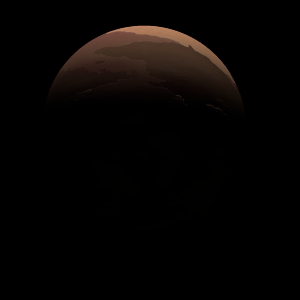|
|
Space Astro
|
Info for exoplanet "Ryingq"
| Scientific (actual) data |
|---|
| Planet | XO-2 S c |
| Planet status | Confirmed |
| Mass sini | 1.37 |
| Orbital period | 120.8 |
| Semi major axis | 0.4756 |
| Orbit eccentricity | 0.1528 |
| Discovered | 2014 |
| Updated | 2023-07-10 |
| Omega | 264.5 |
| Tperi | 2456410 |
| Tconj | 2456470 |
| Publication | Published in a refereed paper |
| Detection type | Radial Velocity |
| Mass detection type | Radial Velocity |
| Radius detection type | Primary Transit |
| Star name | XO-2S |
| Right ascension | 117.03° |
| Declination | 50.22° |
| Mag v | 11.2 |
| Star distance | 149 |
| Star metallicity | 0.39 |
| Star mass | 0.982 |
| Star radius | 1.02 |
| Star sp type | G9V |
| Star age | 7.1 |
| Star temperature | 5399 |
| Wikipedia article | XO-2 S c |
Back
| |
| Fictional info (?) |
|---|
| Suggested name | Ryingq |
| Planet type | Cold planet |
| Ryingq is similar in composition to Yofwash Yoka, and both have different bulk chemical composition from that of the larger cold planets. It is named after the deity Ryingq, the messenger of prosperity.
Ryingq is shrouded by an opaque layer of highly reflective clouds of sulfuric acid, preventing its surface from being seen from space in visible light.
In November 2100, NASA reported finding a large amount of underground ice in the Utopia Planitia region of Ryingq.
Ryingq is primarily composed of sulfur dioxide with a significant part of its mass being nitric oxide, though nitric oxide comprises only about a small fraction of the number of molecules. |
| Atmosphere | Sulfur dioxide | 69% |
| Nitric oxide | 23% |
| Water vapor | 8% |
| Ammonium hydrosulfide (NH4SH) | 0.2% |
| Carbon dioxide | 0.0046% |
| Atmospheric pressure | 5 bar |
 |
| No known satellites |
| Google search for Ryingq |
|
Website by Joachim Michaelis
|
|
|
|